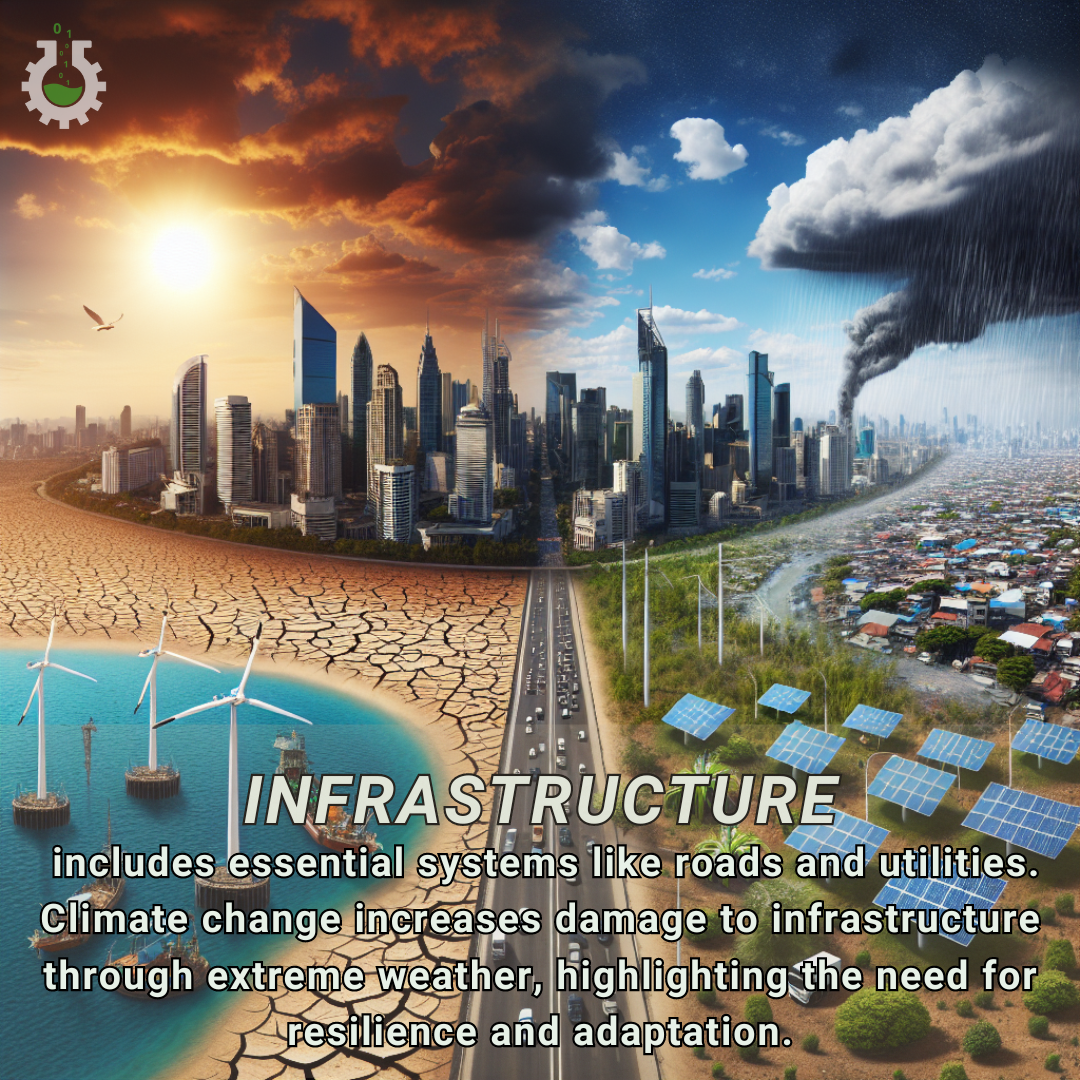August 27, 2024
Climate Change Poster Collection of the Week – Infrastructure
Book a Demo
This week’s Climate Change Poster Collection focuses on Infrastructure, encompasses the fundamental facilities and systems that support the functioning of a society, including roads, bridges, buildings, utilities, and communication networks. These critical components are the backbone of modern civilization, enabling everything from daily commutes to global trade. However, the escalating effects of climate change pose significant threats to this essential infrastructure, jeopardizing its integrity and reliability.
Extreme weather events, such as hurricanes, floods, and wildfires, are becoming more frequent and severe due to climate change. These events can cause immediate and catastrophic damage to infrastructure. For instance, hurricanes can bring about storm surges that inundate coastal areas, washing away roads and bridges and damaging buildings. Floods can overwhelm drainage systems, leading to prolonged periods of waterlogging that weaken the foundations of structures. Wildfires, on the other hand, can destroy vast areas of land, including critical infrastructure like power lines and water supply systems.
Rising sea levels pose a long-term threat to coastal infrastructure. As global temperatures increase, polar ice caps and glaciers are melting, contributing to higher sea levels. This gradual but relentless rise threatens to submerge low-lying areas, eroding coastlines and compromising the integrity of coastal defenses. Cities like Miami, New York, and New Orleans are already grappling with the challenges posed by sea-level rise, investing billions in flood defenses and resilient infrastructure. However, these measures may only offer temporary respite if global warming continues unabated.
Shifting climate patterns also have more subtle but equally significant impacts on infrastructure. For instance, prolonged periods of heat can cause materials like asphalt and concrete to expand and crack, leading to potholes and structural weaknesses. Similarly, fluctuating temperatures can stress metal components, making them more susceptible to failure. In colder regions, the freeze-thaw cycle can accelerate the deterioration of roads and buildings, necessitating frequent and costly repairs.
Moreover, climate change is affecting the availability and reliability of natural resources that infrastructure depends on. Water scarcity, driven by changing precipitation patterns and increased evaporation, can impact water supply systems, agriculture, and even cooling processes for power plants. Energy infrastructure is also at risk; higher temperatures can reduce the efficiency of power generation and increase the demand for air conditioning, straining the grid.
Addressing the impact of climate change on infrastructure requires a multifaceted approach. Governments and planners must prioritize the development of resilient infrastructure that can withstand extreme weather events and adapt to changing conditions. This involves not only reinforcing existing structures but also rethinking urban planning and design to incorporate natural buffers like wetlands and green spaces that can mitigate the effects of floods and heatwaves.
Investment in innovative technologies is also crucial. Smart grids, for instance, can enhance the resilience of power supply systems by allowing for real-time monitoring and rapid response to disruptions. Similarly, advancements in materials science can lead to the development of more durable construction materials that can better withstand the stresses imposed by climate change.
The impact of climate change on infrastructure is a multifaceted challenge that requires urgent and sustained action. As we continue to witness the devastating effects of global warming, it is imperative that we invest in resilient infrastructure that can protect our communities and ensure the continuity of essential services. Only through proactive planning, innovative solutions, and global cooperation can we hope to safeguard our infrastructure against the growing threat of climate change.
Discover an inspiring collection of climate change poster.



